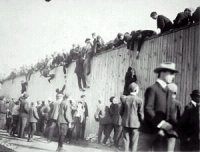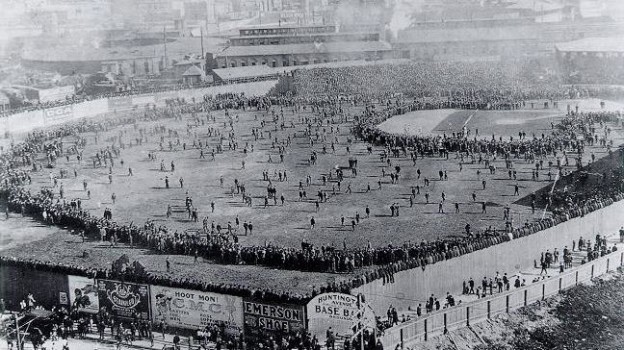Before settling in at Fenway Park, the first home of the Red Sox was the Huntington Avenue Grounds in Boston, which was built only after approval was given to Boston to host a franchise in January of 1901. The location was an open tract of land leased by the Boston Elevated Railroad, which had been used in the past by traveling carnivals and Buffalo Bill’s Wild West Show. The site was also chosen mainly to directly compete with the Boston Braves franchise, located just across the tracks from the South End Grounds. Ground-breaking wasn’t until early March, so the park, built at an estimated cost of $35,000, was constructed in less than two months.
As was typical of early ballparks built in urban settings, the park had some rather odd dimensions. To the left field foul pole, it was 350 feet; to left center, it was 440 feet. The right field foul pole was a mere 280 feet away, but to center field, a ball had to travel an impossible 530 feet to clear the fences. Oddly enough, when renovations were made in 1908, the center field fence was moved 635 feet from home plate!

On 08 May 1901, the first game in the history of the organization was played in the new ballpark after Boston had opened the season with ten games on the road. The home opener was played against the Philadephia Athletics, which Boston won easily, 12-4. The ballpark also had the distinction of hosting the first World Series played between Boston and the Pittsburgh Pirates in 1903. In 1904, Boston fans watched Cy Young pitch the first modern-day perfect game against the Athletics and best Philadelphia ace Rube Waddell.
Finally, after eleven seasons, the Boston played the final game in the history of Huntington Avenue on 07 October, 1911. The following season, Boston began play in the new Fenway Park. The site is now owned by Northeastern University and, where the park once stood, you can visit the World Series Exhibit Room in Cabot Physical Education Center, which is devoted to mementoes of that era in Red Sox history.
